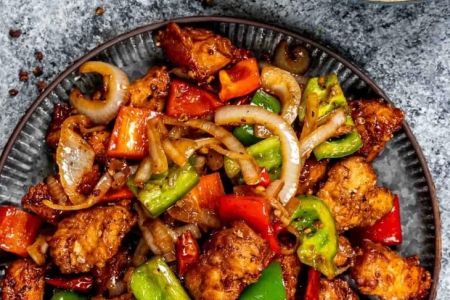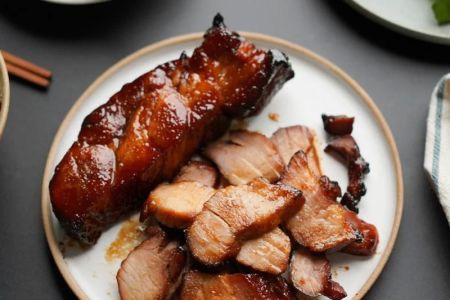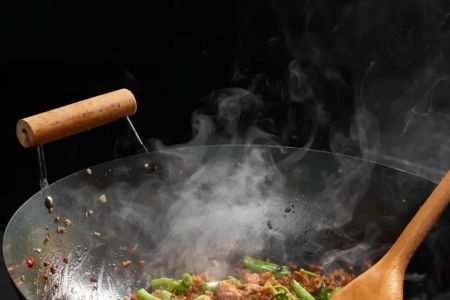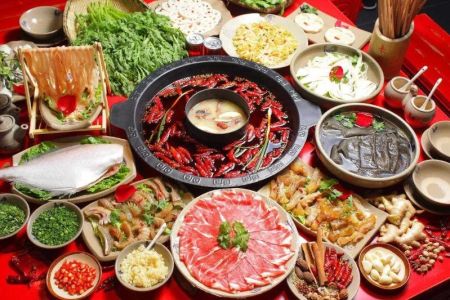Do Chinese Restaurants Serve Cat Instead of Chicken? Debunking the Myths
As someone who loves indulging in a variety of cuisines, I've heard some strange rumors about Chinese food. One of the most bizarre and persistent myths I’ve come across is that Chinese restaurants serve cat meat instead of chicken. This question has surfaced in numerous casual conversations, online forums, and even in mainstream media. So, where does this claim come from, and how much of it is actually true? Let’s break down this widely spread myth and look at the facts.
As someone who has dined in Chinese restaurants around the world, it’s not uncommon to overhear a discussion or encounter a joke about the food served. However, the idea of serving cat meat, though unsettling, has been largely perpetuated by misconceptions and sensationalized stories. In this article, we will explore the origins of this rumor, the reality behind it, and how these myths can impact our dining experiences.
1. The Origins of the Cat Meat Myth in Chinese Cuisine
To understand where the myth about Chinese restaurants serving cat meat comes from, we need to look at the historical context and cultural factors that contribute to such misconceptions. The first thing to note is that the idea of eating cats is not a widespread practice in Chinese culture, nor is it an accepted part of mainstream Chinese cuisine. The origins of the rumor are often traced back to negative stereotypes and misunderstandings about Chinese food and its diversity.
1.1. Misunderstanding Cultural Differences
One reason for these misconceptions is a lack of understanding of the diversity of foods in Chinese culture. China’s vast geography and cultural differences have led to a variety of dishes that might seem unusual to Western palates. For instance, while it’s true that some regions in China have a historical practice of eating animals like dogs or cats, this is far from being representative of the entire country. In fact, the consumption of these meats is rare and has become less common as the country modernizes.
1.2. The Role of Media and Stereotypes
The myth of Chinese restaurants serving cat meat gained significant attention in the media, especially during the 1980s and 1990s. Sensationalized reports, often aimed at portraying Chinese food as strange or “exotic,” contributed to this stereotype. These stories, sometimes exaggerated or taken out of context, spread quickly through social media and popular culture. Movies, television shows, and even internet memes played a major role in perpetuating this idea, despite the lack of factual evidence to support it.
2. The Reality of Chinese Restaurant Menus
Now that we’ve discussed the origins of the myth, it’s time to look at what you can actually expect when dining at a Chinese restaurant. From my experiences, and the experiences of many food critics, Chinese restaurants across the United States and worldwide generally stick to well-known meats such as chicken, pork, beef, and seafood. In fact, many Chinese dishes feature chicken as a staple ingredient, especially in popular dishes like General Tso’s Chicken, Kung Pao Chicken, and Chicken with Broccoli.
2.1. Chinese Cuisine Around the World
Chinese cuisine has become one of the most popular global foods, with millions of people enjoying it in countries far from China. When you walk into a Chinese restaurant, you’ll typically find dishes that feature common proteins like chicken, pork, beef, tofu, and seafood. While some traditional regional dishes in China may involve exotic meats, the majority of Chinese restaurants abroad cater to mainstream tastes. Therefore, finding a dish that includes cat meat is not only rare, but virtually unheard of in any reputable establishment.
2.2. Quality Control and Ethical Standards
Another important point to consider is the strict regulations and ethical standards that restaurants, including Chinese establishments, must follow. In the U.S., for example, food safety laws and quality control measures are taken very seriously. Every meat served in a restaurant must come from a certified and approved source. The idea of a Chinese restaurant secretly serving cat meat is not just misleading—it is highly improbable given the strict regulations governing food safety and meat sourcing in the United States.
3. The Importance of Debunking Myths for Better Dining Experiences
As a consumer, understanding where your food comes from and having accurate knowledge about different cuisines can significantly enhance your dining experience. By debunking myths like the one about Chinese restaurants serving cat meat, we can foster a more open-minded approach to cultural diversity in food and better appreciate the variety of dishes offered in Chinese restaurants.
3.1. Promoting Cultural Awareness
When we allow ourselves to embrace and learn about different cultures, food included, we gain a greater appreciation for the nuances that make each cuisine unique. Chinese cuisine, for instance, is diverse and consists of a wide array of flavors, textures, and cooking techniques. Understanding this helps us make better-informed decisions and avoid jumping to conclusions based on hearsay or stereotypes.
3.2. The Role of Transparency in Dining
Restaurants, especially those that cater to diverse clientele, should provide clear information about the ingredients in their dishes. This transparency helps reassure customers and prevents any misunderstanding about what’s on their plates. It’s always a good idea to ask your server if you have any doubts about the ingredients in your dish. After all, restaurants want their customers to have a positive experience, and clear communication helps create trust and satisfaction.
4. What You Can Expect from a Good Chinese Restaurant
Good Chinese restaurants focus on quality, flavor, and authenticity. Whether you're trying a traditional dish like Peking Duck or enjoying a modern interpretation of Chinese food like Dim Sum, you can rest assured that the ingredients are fresh and sourced responsibly. I’ve had countless amazing meals at various Chinese restaurants, and I’ve always found that their chicken dishes are flavorful, satisfying, and far from controversial.
4.1. Popular Dishes You’ll Find at Chinese Restaurants
Some of the most popular dishes in Chinese restaurants include favorites like Sweet and Sour Chicken, Beef and Broccoli, Mongolian Beef, and of course, various seafood options. These dishes are loved for their balance of flavors, with savory, sweet, and tangy notes that are characteristic of Chinese cooking. If you’re worried about what’s in your meal, always ask the restaurant for more information, but rest assured that your meal will most likely contain ingredients like chicken, beef, pork, or tofu—nothing out of the ordinary!
4.2. How to Choose the Right Chinese Restaurant
When looking for a great Chinese restaurant, it’s important to consider its reputation. Look for places that have good reviews, are well-known in the community, and offer a wide variety of dishes. A reputable restaurant will prioritize quality ingredients and will be more than happy to answer any questions you have about their food.
In conclusion, while the rumor about Chinese restaurants serving cat meat may have existed for years, the reality is quite different. The majority of Chinese restaurants, especially in the United States, serve traditional and familiar dishes with commonly used meats like chicken, beef, and pork. It’s crucial to approach these myths with a healthy dose of skepticism and embrace the delicious and diverse flavors that Chinese cuisine offers.
SEO Title: Do Chinese Restaurants Serve Cat Instead of Chicken? Debunking the Myth
SEO Keywords: Chinese restaurants, myths about Chinese food, serving cat meat, Chinese cuisine facts, food safety in Chinese restaurants
SEO Description: Learn the truth about the rumor that Chinese restaurants serve cat meat instead of chicken. Discover the real ingredients in your favorite Chinese dishes and debunk this myth.






![Top Chinese Restaurants for Authentic Cantonese Cuisine in [Your City]](https://img.gochinarose.com/d33/2507/4157910400_450x300.webp)
